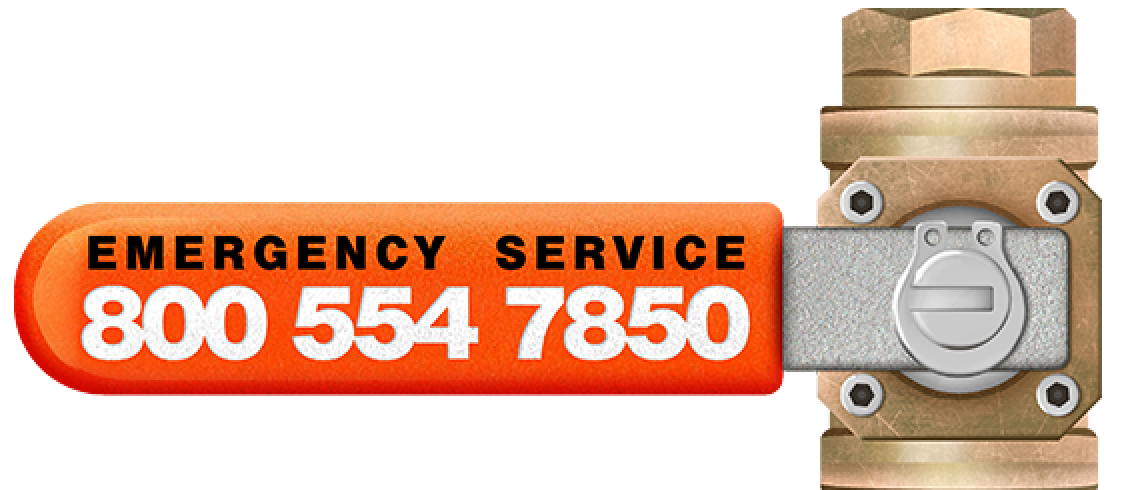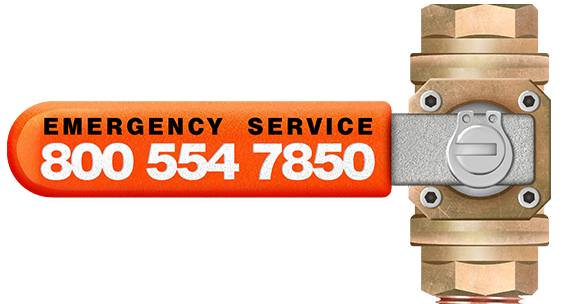Here in Florida, most building foundations are concrete slab. You have a rock-hard concrete floor and it seems impervious to water intrusion. However, concrete is porous. No, water isn’t going to soak up like a sponge, but concrete does allow water to seep through when there is enough. Concrete also cracks, and those cracks will be the first routes of seeping water as it leaks through the slab.
If you have water coming up through your floors, the first thing you need to do is identify why. What is the source of the slab leak?
Some common causes are:
- A broken pipe beneath the foundation
- Excess groundwater from rain runoff not properly managed
- Rising Water Table
Broken underground water pipes are your biggest concern and need to be addressed right away. As the dirt beneath your home is turned to mud by the broken pipe, sometimes it can get washed away and a sinkhole could form. It will take all the dirt beneath your home and can take your home with it. That is the worst-case scenario, but it’s not unheard of.
This is why you need to find out what is causing the water.
Broken Pipe Beneath the Foundation May Be First Discovered By a Leaking Slab
The biggest problem is a broken pipe under the foundation. That will compromise the safety of the whole home and – adding insult to injury – will cost you a high water bill the whole time it’s causing damage.
If the pipe that is broken under the slab is a sewer pipe, then the threat is more than the damage water can do, but introduces toxic sewage with all the disease, bacteria, and odor that comes with it. A slab leak with a broken sewer pipe can be especially unpleasant and dangerous.
A plumber can find the location of the broken pipe and then fix it. Unfortunately, this might involve taking a jackhammer to your floor to expose the pipe. It will be fixed and then your concrete restored. While the plumber will not fill in the concrete after the pipe is fixed, Construemax is here for you to take care of the restoration.
Excess Groundwater Can Leak Through Your Slab
The water table is a naturally occurring underground aquifer where our drinking water comes from. It gets treated to make certain it’s safe and is then delivered to our homes through the water mains. This water table is the point underground where the ground is saturated with water.
Between that water table and the surface of the ground is an unsaturated zone. While it is unsaturated, it does still have water. This groundwater is always fluctuating based on what is happening on the surface. This zone can be very thick or nonexistent where you have lakes and ponds.
Your home is built on top of this unsaturated zone and underneath your slab, it should not have too much groundwater. When that ground immediately beneath your slab gets saturated it has to go somewhere. Because concrete is porous, it will start leaking through the slab.
We get a lot of rain in Florida and if we fail to direct the runoff of that rain, it can go where we don’t want it, under the foundation. Gutters channel the water to your downspout, and at the bottom of that pipe, you should have a splash block. That directs the rainwater away from your home’s foundation. Without that, heavy rains and storms can saturate the ground under your foundation and start to seep up through cracks in the foundation, and even right through the concrete pores.
Rising Water Table
Just as groundwater saturation levels fluctuate, the water table level fluctuates as well. Many things influence the level of the water table, but as water levels rise, it can infiltrate your home.
It is quite likely that if the water table rises this far, to the level of your foundation, it will be part of a bigger event. For example, local lakes or ponds rise and create flooding conditions. This has happened as recently as 2019 in Gotha, Florida where homes were flooded from rising ponds and groundwater.
Even if you don’t see water coming into the home from ponds or lakes, if the water table has risen beneath your home, the excess moisture can find its way to seep through your slab.
Damage from Wet Concrete
Aside from a sinkhole, which, if it happens to you is a bigger problem than wet concrete, the damage that can result from a wet foundation can be very costly as well. Damage from a leaking slab include:
- Mold growing on the wet concrete surface, or anything it touches
- Saturation of other building materials including your wood framing, trim, and drywall
- Loss of adhesion of wood flooring and tiles
Mold After a Slab Leak
Mold growing on concrete can be taken care of. Construemax can help you with mold remediation, and you want to address this right away. It is the first thing you need to do because of health risks to the people and pets living in the home. But it also needs to be resolved so that it’s safe for workers to come in to dry out your home, and before a plumber can come in and resolve a water leak beneath the slab.
Water Damage to Your Home’s Building Materials
When you have water seeping up through your concrete slab you will need to replace the carpet pad on your floor, at the very least. But you might need to replace the carpet too. Water will destroy a carpet quickly, particularly when it is saturated.
Wood is a bit more resilient and can be dried out, but wood framing and furring strips (which is used in a home built with block) will quickly soak up the leaked water from your slab. From both the slab and the wood, water will be drawn into drywall.
If caught early enough, Construemax can dry out your home so that you won’t have to replace all your drywall. But if water has been allowed (often unbeknownst to you) to saturate these materials, they may need to be removed and replaced.
High Moisture Content Prevents Proper Adhesion
Whether you’re using tile flooring, wood, or laminate, your installer will use an appropriate adhesive to adhere the flooring to the concrete. If the concrete has too much moisture, it can prevent the adhesive from sticking, or cause existing flooring to lose its adhesion.
You might not notice any problem with your foundation because the wood or tile flooring is dry. But if you see signs of a leaking slab in another part of the home, your installed tile or wood floors are at risk too. Perhaps it is just the garage where you see water seeping through cracks. If it’s the same slab, you may be experiencing water damaging other parts of your home not so obvious to these first signs of water leaks.
Concrete floors are designed with vapor barriers to minimize this sort of problem, but those barriers are rated by permeability, which is to say, with enough moisture there is still some permeability.
Additionally, if any mistakes were made in the mixing and pouring of your slab, the moisture content may not be what it should be. And with older homes there is no way of knowing what standards were used when that foundation was laid.
Conclusion
Water inside your home should never be ignored when it is found where it doesn’t belong. Water on your concrete floors should be cleaned up immediately and you need to make sure that it isn’t a slab leak.
We hope you never need our services, but if the unexpected happens Relax, Trust Construemax.







